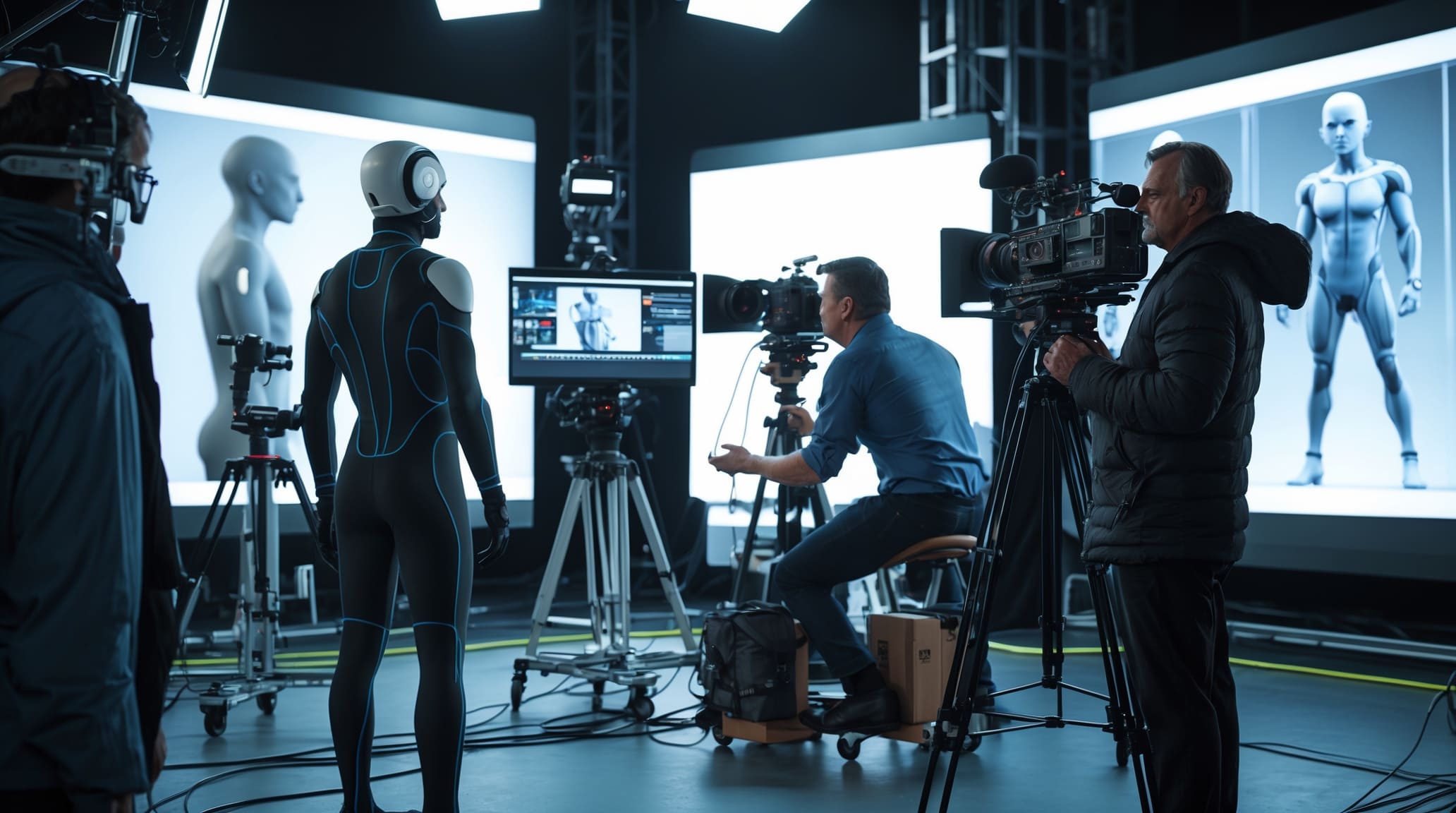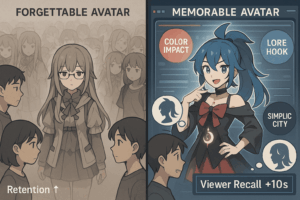The evolution of filmmaking has always been marked by groundbreaking innovations, from the introduction of colour in the early 20th century to the rise of computer-generated imagery (CGI) in recent decades. One of the most revolutionary advancements, however, has been the use of 3D character modeling in the film industry. Today, 3D character modeling and motion capture are reshaping how films are made, particularly in live-action settings. These technologies are enabling filmmakers to create stunning visual effects, giving rise to digital doubles, animated characters, and entire scenes that push the boundaries of imagination.
As we delve into how 3D character modeling is impacting live-action filmmaking, we’ll explore notable examples like Star Wars, The Polar Express, and Terminator 2: Judgment Day, as well as how CGI technology continues to evolve, influencing the future of cinema.
What is 3D Character Modeling and Why Does It Matter?
3D character modeling is the process of creating three-dimensional digital representations of characters used in films, games, and animations. This technique involves shaping, sculpting, and texturing virtual characters to appear as realistic or stylized as needed, often for integration into live-action scenes or animated sequences.
Why is it important? In the film industry, 3D character modeling is vital for bringing fantastical and complex characters to life. It enables filmmakers to push creative boundaries and create more immersive experiences. With advances in CGI, motion capture, and digital doubles, 3D models make it possible to blend real-life actors with digital creations, delivering jaw-dropping visual effects and captivating narratives that resonate with audiences.
The Role of CGI in Creating Stunning Visual Effects
CGI technology plays a crucial role in creating realistic 3D character models for live-action films. It allows for the seamless blending of animated characters with live-action scenes, producing stunning visual effects that enhance the storytelling experience. Whether it’s a fantastical creature from another world or a digital double of a human actor, CGI enables filmmakers to push the limits of what can be created on screen.
One of the most significant developments in CGI technology is its ability to recreate real-life actors and characters with exceptional accuracy. Digital doubles, for example, are now commonly used in films to replicate an actor’s movements and expressions. These digital doubles can even perform stunts or appear in scenes where it would be dangerous or impractical for a real actor to do so.
Notable Examples in Cinema: Star Wars, The Polar Express, and Terminator 2: Judgment Day
Over the years, many filmmakers have used 3D character modeling to create breathtaking, memorable scenes. Let’s look at a few notable examples that demonstrate how 3D character modeling has been used in live-action filmmaking.
Star Wars: A Galactic Evolution of Visual Effects
One of the most iconic uses of 3D character modeling and CGI is in the Star Wars franchise. From the very beginning, the Star Wars films revolutionised the use of visual effects, incorporating motion capture, digital doubles, and other CGI techniques. The character of Yoda in Star Wars: Episode I – The Phantom Menace is one of the earliest examples of how 3D character modeling and CGI technology were used to create a character that felt as real as any actor.
But it wasn’t just Yoda’s digital likeness that made the Star Wars franchise a trailblazer in live-action filmmaking. Motion capture was used extensively in the prequel trilogy to animate the movements of characters like Gollum in The Lord of the Rings, allowing them to interact seamlessly with the live-action world. The stunning visual effects of Star Wars pushed the boundaries of what was possible at the time, setting the gold standard for visual effects in modern cinema.
The Polar Express: A Milestone in Motion Capture and 3D Modeling
Another landmark film in the evolution of 3D character modeling is The Polar Express (2004), directed by Robert Zemeckis. This animated film used groundbreaking motion capture and CGI to create 3D models of human characters that interacted with the animated world. While the film itself was not a 3D film in the traditional sense, its combination of motion capture and 3D character modeling brought the characters to life in a way that had never been done before.
The film’s unique visual style and use of motion capture technology sparked a revolution in the way animated characters were created. With incredibly realistic 3D character modeling, the film set the stage for future animated films that would blur the line between animation and live-action.
Terminator 2: Judgment Day: CGI in the Early Days
James Cameron’s Terminator 2: Judgment Day (1991) was one of the first films to use CGI technology. In fact, it showcased the shape-shifting T-1000, which was revolutionary for its time and helped establish CGI as a key tool in filmmaking. Furthermore, the T-1000’s liquid metal form was created using 3D character modeling. This technique allowed the character to deform and shape-shift in ways never seen before. As a result, this groundbreaking use of CGI became one of the most memorable elements of Terminator 2. Its success, in turn, paved the way for future films to adopt similar technologies.
CGI Technology – How 3D Character Modeling Enhances Live-Action Films?
Today, 3D character modeling is an essential part of the filmmaking process. With the help of motion capture, filmmakers can create hyper-realistic characters that interact with live-action environments in a seamless way. These technologies not only improve the look of the final product but also add depth and authenticity to the characters, making them feel more real to audiences.
For example, in motion capture, actors wear suits that track their movements, which are then transferred to a 3D model. This enables filmmakers to create characters that move and behave just like real people, regardless of whether they are human or fantastical creatures. The digital doubles of actors allow them to perform dangerous stunts or appear in scenes that would otherwise be impossible.
Furthermore, 3D character modeling and CGI technology allow filmmakers to create stunning visual effects. As a result, these effects would be impossible with traditional techniques, pushing the boundaries of filmmaking. For instance, whether it’s a space battle, a fantasy landscape, or a prehistoric world, CGI brings ideas to life. In doing so, it captures the audience’s attention and sparks their imagination in ways never seen before.
The Magic Behind the Screen: How 3D Character Modeling Transforms Audiences’ Connection with Film?
Imagine watching a film where the characters you cheer for and the creatures you fear aren’t real. They’re created entirely through 3D character modeling but feel as real as live actors. Despite being fabricated with CGI technology, these characters move and emote like real people. They engage with realism, forging a connection with the audience like never before. It’s not just about making things look pretty; it’s about making audiences feel something deeply. This transformation is one of the most relatable and impactful aspects of modern cinema.
The Emotional Impact of Digital Characters
3D character modeling brings a new dimension to storytelling, offering filmmakers the opportunity to create visual effects that aren’t just cool to watch but that elevate the narrative. Remember the breathtaking scenes of motion capture-driven performances in Avatar? It’s not just about watching characters interact; it’s about seeing their pain, joy, and growth, almost as if they were real people. Digital doubles and 3D character modeling allow filmmakers to tell more compelling stories, where the physical limitations of real-world actors and sets no longer exist.
The innovation doesn’t stop there. Films that use 3D modeling help us break free from the boundaries of our own reality. They give us the freedom to explore space, time, and alternate worlds. Films like Star Wars, The Polar Express, and Terminator 2: Judgment Day showcase technological achievements. They bring stories to life in ways we couldn’t have imagined a few decades ago.
Breaking the Boundaries of Reality
The real power of 3D character modeling is its ability to make characters feel real, even when they aren’t. This uncanny ability mixes fantasy with authenticity and makes these films unforgettable. It allows audiences to connect deeply. Today, visual engagement matters more than ever. Realistic 3D character creation will continue to captivate and shape cinema for generations.
The Future of 3D Character Modeling in Live-Action 3D Film
As 3D character modeling continues to evolve, the film industry is heading into an exciting future. Films like Avatar (2009) push the boundaries of CGI technology and motion capture. Its upcoming sequels continue raising the bar. These films use 3D character modeling to create lifelike characters. The characters interact seamlessly with the live-action world, setting a new standard for visual effects.
With the rise of new software and advancements in CGI, the future of 3D character modeling in live-action films looks promising. We can expect to see even more detailed, realistic digital doubles and animated characters, all created with cutting-edge technology. As this technology becomes more cost-effective, more studios will access advanced filmmaking tools. They will produce films with jaw-dropping visual effects and truly immersive worlds. The potential for 3D character modeling in live-action filmmaking is limitless. It will remain a driving force in the film industry for years to come.
The Impact of 3D Character Modeling on the Film Industry
From Star Wars to Avatar, 3D characters have revolutionized the film industry. Filmmakers now create lifelike characters and breathtaking visual effects that captivate audiences worldwide. Technologies like motion capture, CGI, and digital doubles have become indispensable tools in filmmaking. These tools allow creators to build imaginative and otherworldly environments that feel incredibly real. As technology evolves, 3D character modeling will play an even greater role in live-action cinema. It will push the boundaries of creativity and transform the future of visual storytelling. For filmmakers who want to bring characters to life with cutting-edge technology, 3DAiLY offers the perfect solution. We provide the tools and expertise to create stunning, realistic 3D models that empower your big-screen vision.



